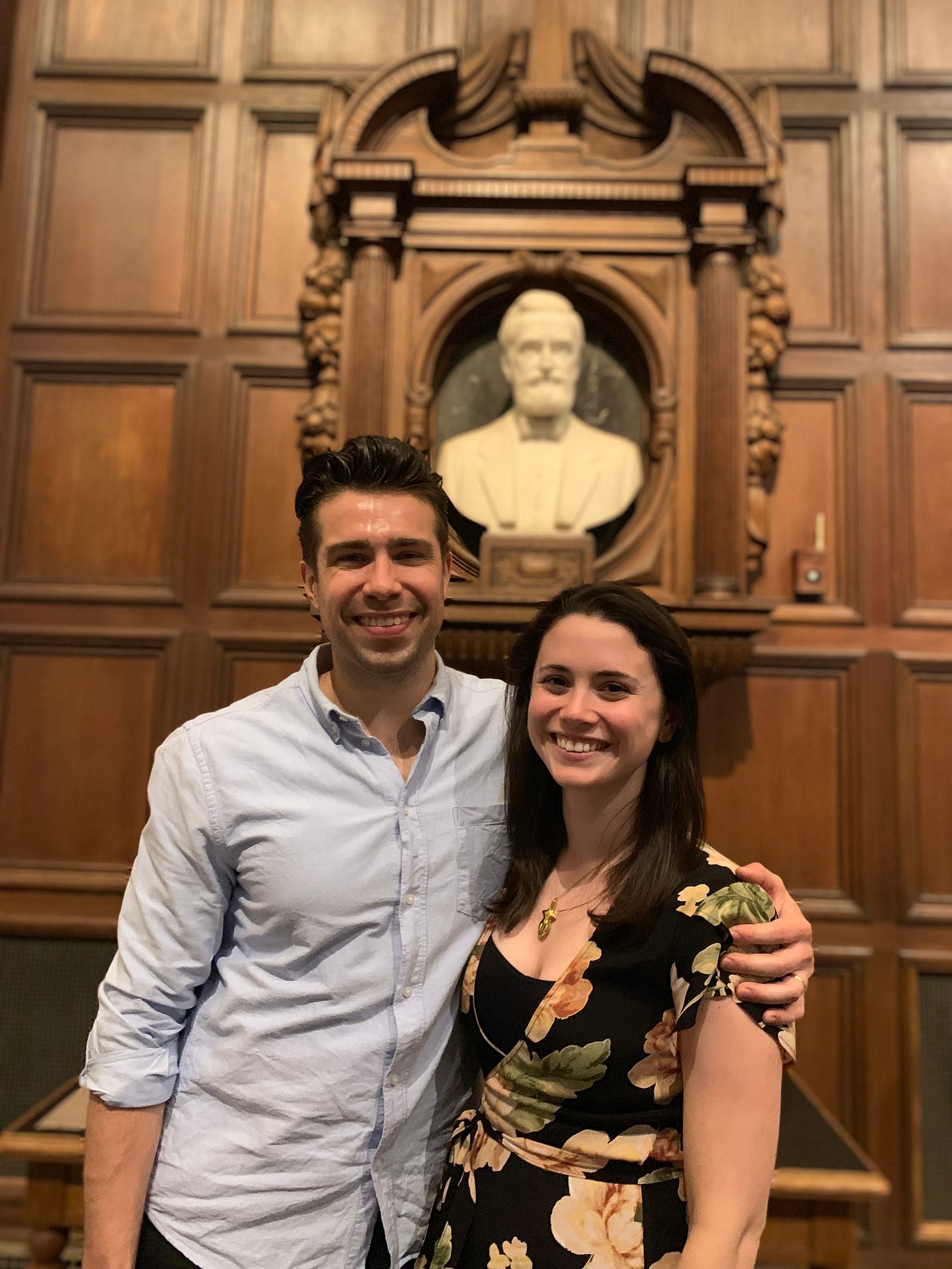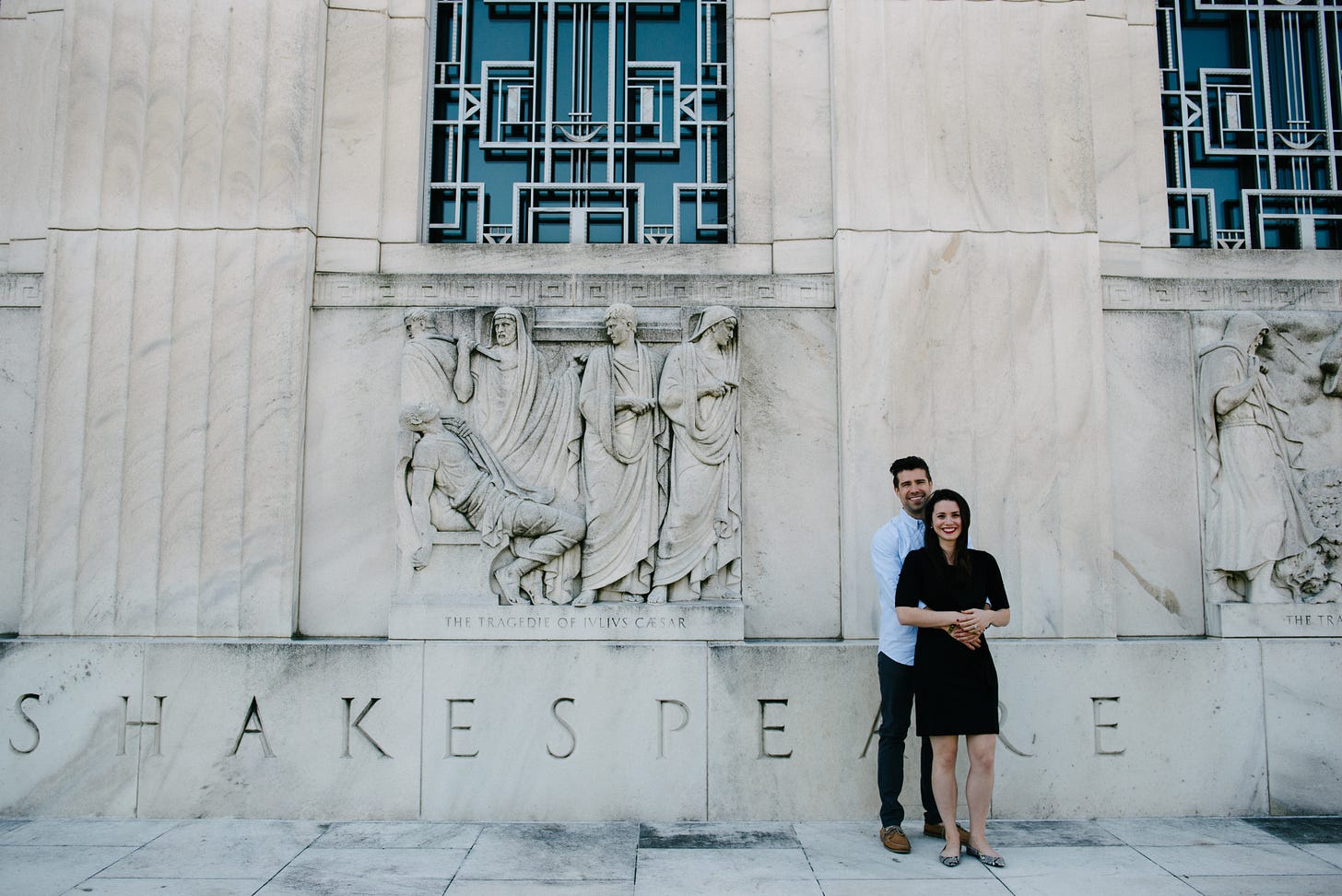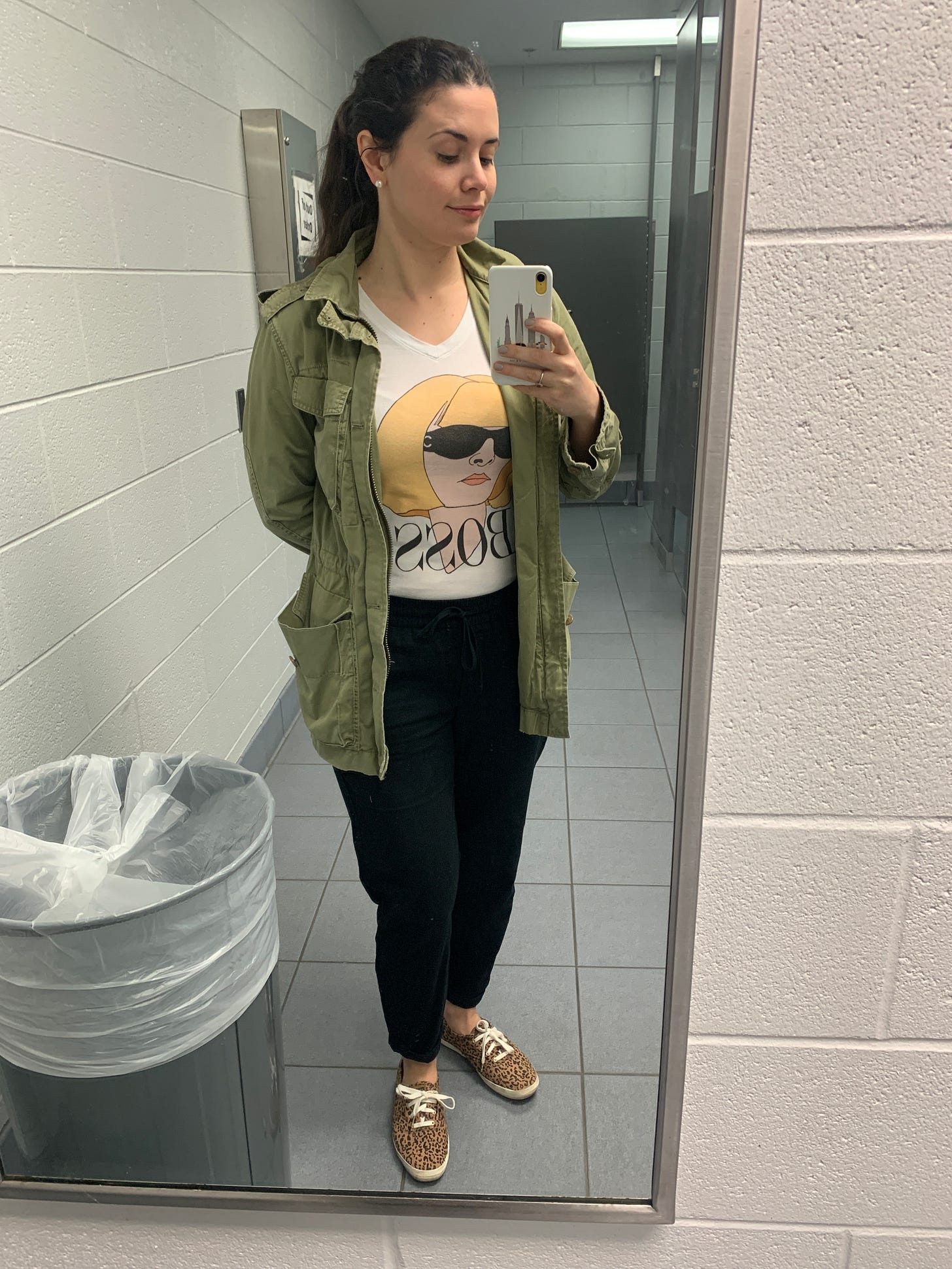OOO #22: Outfits, Ohio, and Other Things I Like
In honor of the recent Met Gala, Forbes (?!?!?!), and one of my top five favorite places on the planet
Outfits
Ohio
A few weeks ago, my husband mentioned that Columbus had recently been called “a hidden gem in plain sight” by journalist Katie Chang in this article in Forbes magazine. I finally got around to reading the article, and it was fun to hear a New Yorker gush about my adopted city as one of her favorites in the country and profile it in a way that shows it as the treasure it is.
Chang’s exploration of Columbus focused on places I haven’t yet been to or haven’t even heard of; I’ve been to about half of the restaurants she mentioned (including Understory) and only one of the places in the “what to do” category: Franklin Park Conservatory. I’m particularly interested in going to Agni (a name which first threw me because it is also a type of nuclear-capable ICBM), FYR, Joya’s, and Good Land. The article has also inspired me to be more intentional about going to the Franklinton Arts District.
With Google recently announcing its plans to establish two new data centers, Intel’s chip factory “mega-site,” and the general explosion of construction around High Street and campus, it’s clear that the tech and business world sees the greater Columbus area as a place worth investing in. As do I! I’m excited to see how the city grows in the next ten years. Here’s hoping it includes greatly expanded public transport (including a light rail), more investments in public education and youth programming throughout the city, more terminals and international flights at CMH, and an NBA team!
Other Things I Like
I just finished reading The Millionaire and the Bard: Henry Folger's Obsessive Hunt for Shakespeare's First Folio by Andrea Mays. The Millionaire and the Bard is the 450-year story of the creation of one of my top five favorite places in the world: The Folger Shakespeare Library in Washington, DC.* I loved this book for many reasons (you can read my review on Goodreads here), but what made it an absolute joy to read was that it gave me insight into the decades-long, passion-driven journey Henry and Emily Folger undertook to create this unique institution.
The Folger Shakespeare Library is the largest Shakespeare library in the world. The Folger serves as research library for Shakespearean, Elizabethan, and Jacobean scholars; a theatre for Shakespeare and related plays; an exhibition space for all sorts of shows; an educational resource for local students; and well… see below.
I first went to the Folger in 2015 to see an exhibition called “Ships, Clocks and Stars: The Quest for Longitude.” I had never heard of the Folger before and loved both the building and the exhibition, so I asked to join a tour. I was, much like the ballet from last week’s newsletter, immediately hooked.
The Folger Shakespeare Library was founded by Henry and Emily Folger, who built the library’s collection over the course of their lives with the money from Henry’s career at Standard Oil. I loved** reading about the meticulous ways they (and it was clear Emily was a true partner in this endeavor) researched, collected, and documented every folio, quarto, and work of art in their massive and historic collection. Of the 235 (known) First Folios, 82 of them were purchased by Henry and Emily Folger and now have a happy and safe home at the Folger (and one is always on display for visitors). Henry and Emily are also both interred in the library they built, which I think is beautiful.

One of the most charming features of the Folger is the Elizabethan theatre built within the library;*** Henry never anticipated it would be a functioning theatre as it is now, and according to Mays’s book, he did not request dressing rooms to be built (I’m very curious about the logistics of the performances). Regardless, some of the best acting performances I have ever seen have taken place in that theatre.
I think the thing that I love the most about the Folger is that it is a deeply positive place for visitors. It’s a monument to Shakespeare, to scholarship, and to the written word, and it’s a beautiful one at that. But what’s even more important is that the Folger makes Shakespeare accessible. Shakespeare’s language and references are sometimes a struggle, even for this humble English teacher, but the Folger makes it clear that Shakespeare is for everyone, and makes you believe it too. Everything the Folger’s team produces— podcast, plays, exhibitions—is brimming with passion for the bard and art itself, and it’s infectious (seriously, Barbara Bogaev’s work on the “Shakespeare Unlimited” podcast is nothing short of delightful). Basically, it’s hard not to root for the Folger once you’ve been.

The Folger is an institution built on love and respect for the work of William Shakespeare, much like the First Folio itself. Two of Shakespeare’s friends and colleagues from the King’s Men—John Heminge and Henry Condell—pulled together all of Shakespeare’s play into this volume after Shakespeare’s death because, in their own words, they wanted to “keep the memory of so worthy a friend and fellow alive as was our Shakespeare.” Without Heminge and Condell’s tribute to their friend, we would not have 18 of Shakespeare’s plays—including “Macbeth”—since they were never published before. Their friendship was a gift to us all.
*the others are: The Met, the entire city of Rome, the entire city of Venice, and my childhood home/hometown. My own house is #6 (but has risen quickly in the ranks in the last year).
**I have used the word “love” approximately 8,000 times in this write-up because I do truly love the Folger.
***the first play my husband and I saw at the Folger was “The Winter’s Tale” which remains my favorite of his plays (his romances are my favorite genres). When the Folger reopens this fall after a multi-year renovation project, their first production will be “The Winter’s Tale.” You can BET I’ll be there.
That’s it! Have a great rest of your week!







Yes for light rail! Better transport between the small regional airports and community gathering places would also be terrific. Bolton Field, Don Scott and other small airports around 270 could help enhance regional travel.